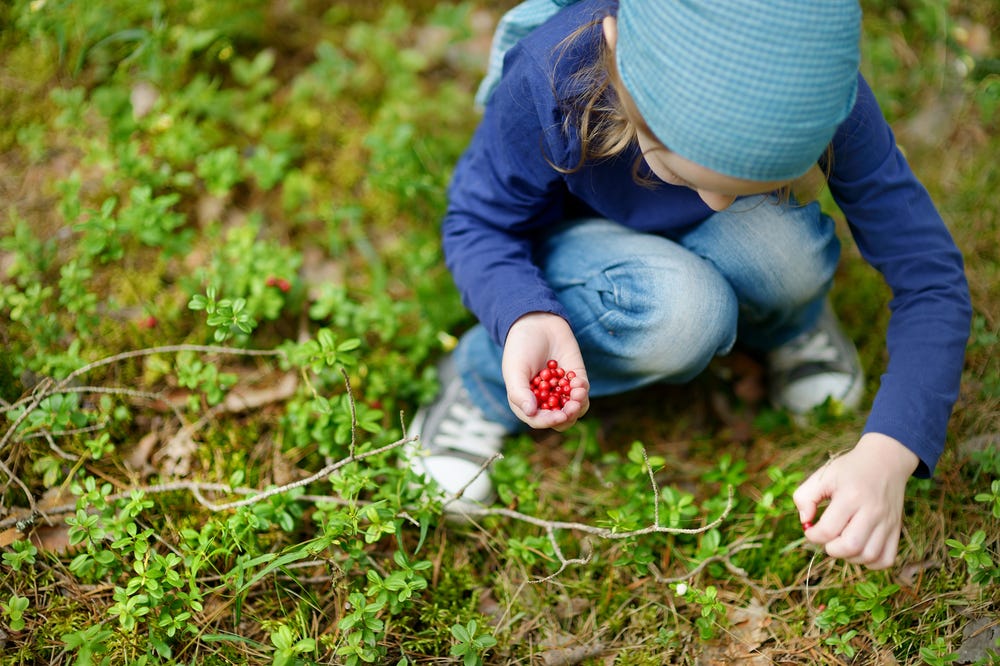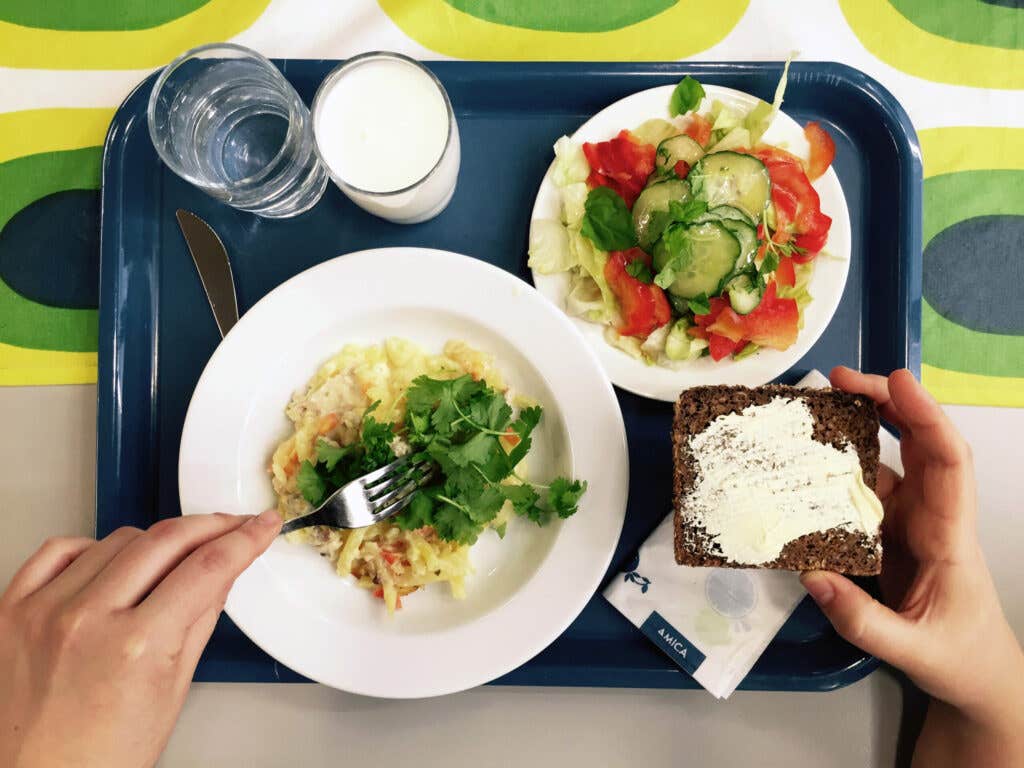
The EU is Starting a Massive Program to Improve School Lunch Across Europe
New subsidies for fruits and vegetables aim to put local and organic produce at the center of the plate

Though American school lunches leave much to be desired, things are looking brighter on the other side of the Atlantic. The EU is funding a new program to help cover the cost of school lunch—and subsidize fruits and vegetables for more nutritious meals.
For example, in Finland, the program will help to cover the costs as much as three quarters of the cost of fruits and vegetables. Starting in August, every municipality in Finland can apply for the subsidies to purchase local products. Organic produce will receive 75 percent subsidies, and conventionally grown fruits and vegetables will be covered up to 65 percent. Each EU country will determine which particular items of produce it will cover, based on health and environmental considerations, seasonality, variety, and availability. But the goal across the board is to support sustainable farming through greater subsidy incentives.
Finland was the first country in the world to serve free school meals; it's been offering them since 1943. The role of school meals is seen as a pedagogical tool to teach good nutrition, food culture, table manners, and eating habits, as well as to increase consumption of fruits and vegetables and other nutritious whole foods.
Previously, the EU has only subsidized the cost of milk products. In Finland, that dairy support has received some criticism: the largest beneficiary of the two billion Euro subsidies is the country's largest dairy company, Valio, which received 2.3 million euros. 90 percent of that sum was in the form of subsidies for school milk. Critics say the milk industry is getting too much promotion in the name of public health.
Now, from the subsidy point of view, the school lunch benefits are getting more balanced.
The new School Fruit, Vegetables and Milk Scheme also has an educational dimension: EU states accompany the distribution of products with educational measures, in order to reconnect children to agriculture, and raising issues such as local food chains, organic farming, sustainable production, and food waste.
The total EU budget is € 250 million per school year, of which € 150 million for fruit and vegetables and € 100 million for milk, including the food education costs.
Keep Reading
Continue to Next Story










